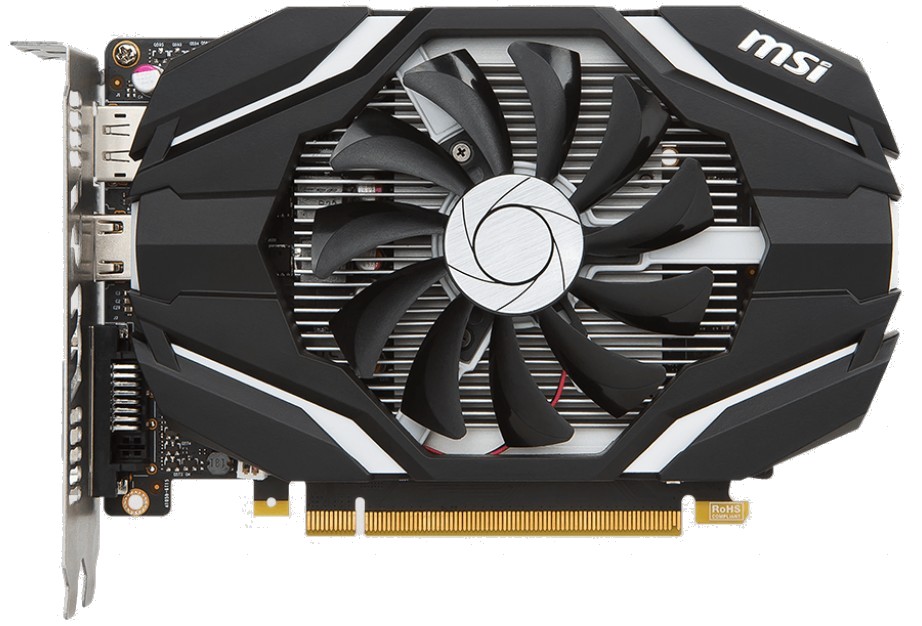Nvidia GeForce GTX 1050 Ti Passive Cooling Mod
GeForce GTX 1050 or GTX 1050 Ti?
Although Nvidia rates the GeForce GTX 1050 and 1050 Ti for 75W, you might imagine that the 1050 would be better-suited to passive cooling. However, the 1050 Ti's performance advantage, helped in part by twice as much on-board memory, compels us to pick the higher-end model. A maximum of 2GB just isn't enough these days.
MSI's fairly simple GeForce GTX 1050 Ti OC stands in as our test subject. It has no separate power connector and features some extra mounting holes that we'll discuss shortly. Using a power target of 80%, the hardware never exceeds an average of 52W, and it often draws significantly less. If you're truly worried about heat, you can dial the power target back even further to 60%. The performance loss imposed by a more conservative ceiling isn't as bad as the percentage suggests.
| Power Target | Metro Last Light, 1080p | FurMark Full-Screen |
|---|---|---|
| 100 Percent | 66W | 70W |
| 90 Percent | 59W | 62W |
| 80 Percent | 52W | 54W |
| 70 Percent | 45W | 47W |
| 60 Percent | 39W | 41W |
| 50 Percent | 34W | 36W |
To recap so far:
SummaryThe GTX 1050’s 2GB of on-board memory is not especially future-proof.The card's power draw can be tuned easily through the power target setting.The simplest 1050 Ti will suffice for this project, and it requires no overclock.
Get Tom's Hardware's best news and in-depth reviews, straight to your inbox.
Current page: GeForce GTX 1050 or GTX 1050 Ti?
Prev Page Modifying a GeForce GTX 1050 Ti for Passive Cooling Next Page Installing An Aftermarket Cooler
Igor Wallossek wrote a wide variety of hardware articles for Tom's Hardware, with a strong focus on technical analysis and in-depth reviews. His contributions have spanned a broad spectrum of PC components, including GPUs, CPUs, workstations, and PC builds. His insightful articles provide readers with detailed knowledge to make informed decisions in the ever-evolving tech landscape
-
AndrewJacksonZA Thank you for the really nice article Igor. It was an unexpected surprise and a pleasure to read. :-) Very interesting to read.Reply -
Poozle you know setting the fans to even minimal (20-30%) where you cant detect an audible difference would be safer and nearly as quiet... but I digressReply -
FormatC The problem is, that the marketing is telling us that it works. I ordered an original passive card directly from a manufacturer and will check it in a short follow-up. Without any airflow in the case this must fail ;)Reply -
AndrewJacksonZA Reply
It immediately reminded me of Sapphire's R9 Fury Tri-X:19136703 said:That giant cooler is so funny looking on that little card. :)
-
FormatC Same principle, but the used cooler is 4 years old.Reply
It seems that Sapphire copied the idea ;) -
thor220 It looks like the large tail of that Cooler isn't even doing anything. No point in making a passive cooler that big if it can't transfer the heat.Reply
I would much rather see a passive water cooled setup with no fans, only the pump. -
TJ Hooker Reply
What makes you say that? The heat pipes extend the length of the cooler, even the fins at the end should be absorbing and dissipating some of the heat.19139141 said:It looks like the large tail of that Cooler isn't even doing anything. No point in making a passive cooler that big if it can't transfer the heat.
